Cell Tower Triangulation is a technique used widely by mobile network operators, devices and phones to help identify their location.
A device that is within communication range of three or more mobile network towers is located by the overlap of signals based upon its range from each tower.
The mobile towers broadcast their position and by knowing the distance of the phone from each of the towers, the location of the device can be calculated and determined.
The average accuracy of a mobile tower is between 0.5KM to 1.5KM.
Whilst the minimum amount of towers for triangulation is 3, it is still possibly for two towers, or even one to locate a device; it’s just not as accurate.
1-3 Cell Towers Locating a device
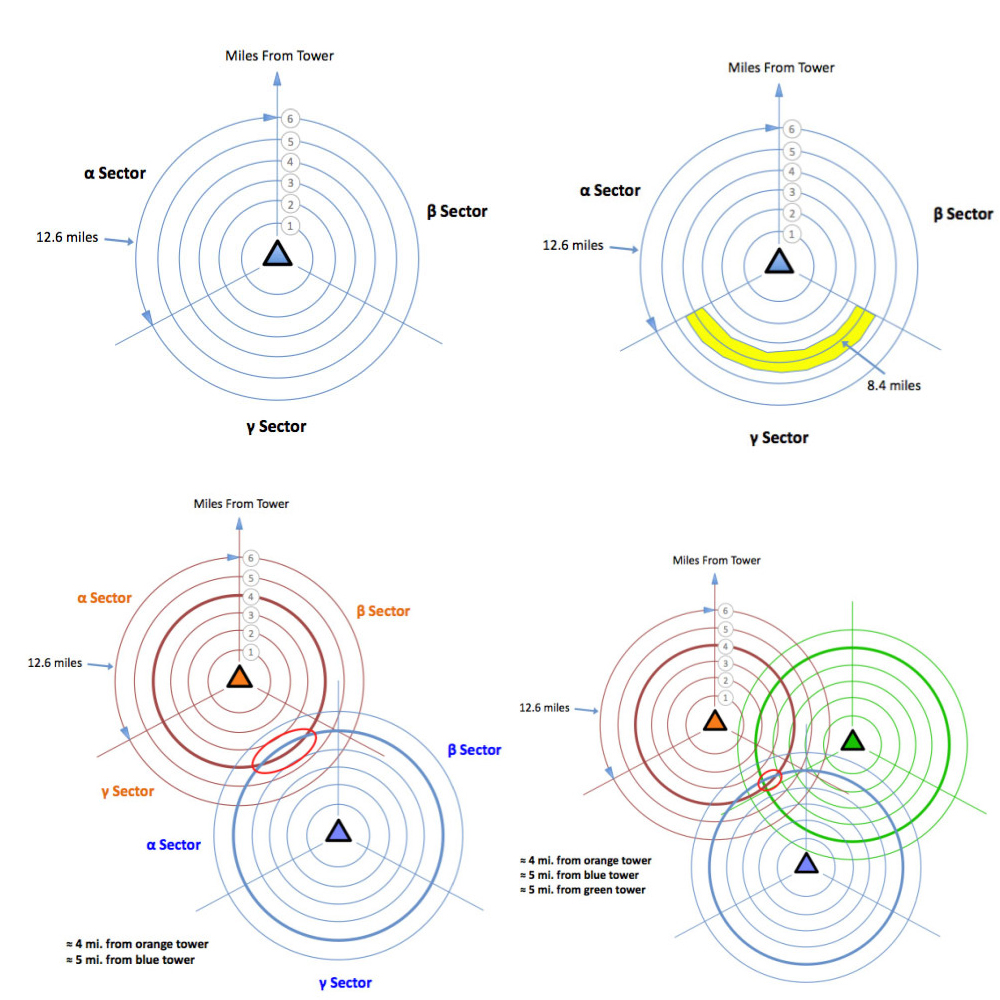
Radio antennas on a cell tower are always organized in a triangle.
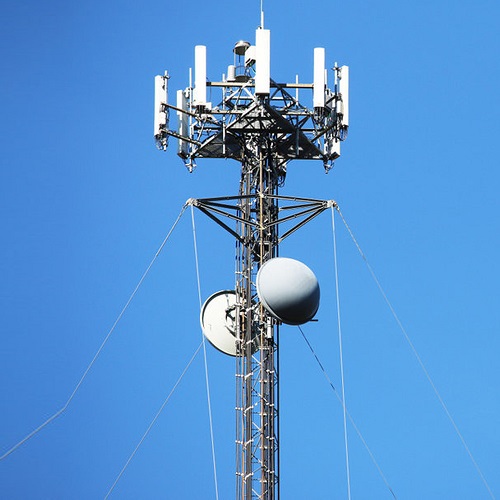
Having the antenna array in a triangle shape allows that phone tower to detect from which of the three antennas it is getting signal.
Every one of the three antenna clusters covers a 120° area with the tower at it’s center, and these areas, by show, are represented to as alpha, beta, and gamma – α, β, γ.
Within each sector, the tower can determine the distance of the transmitting device. This is done by measuring the strength of the signal and the time in which it takes for the signal to hit the destination and return.
This method is not a very accurate technical measurement, and the final distance will not be correct.
Single Cell Tower
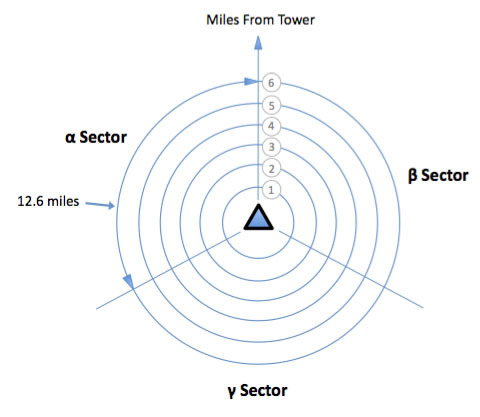
The diagram above (top left portion) shows concentric bands of distance in relation to the tower.
You can see the distance bands don’t stop at “6”.
Single Cell Tower locating
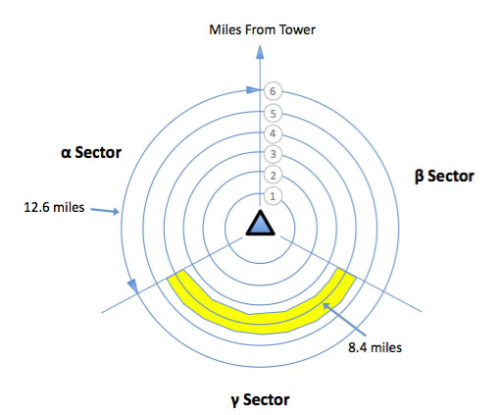
Here is how a single mobile network tower would work.
The mobile tower can determine that the signal is being received from the γ sector, and that the source of the signal is close to 8 km from the mobile tower.
The mobile tower is then able to locate the source of the signal, placing the device within the yellow band which is around 16km long and .25km wide for a total of around 4km².
Two Mobile Cell Towers
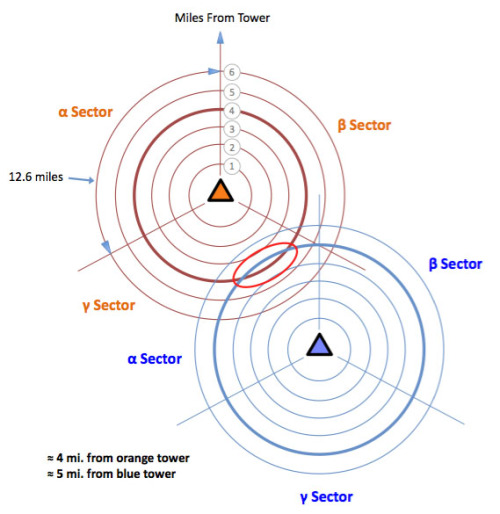
If the device is also negotiating with a second mobile tower simultaneously, the ability to locate the source device is improved dramatically.
Above is an illustration of the environment when the device is 8km from the orange tower in the γ area, and 10km from the blue mobile tower in the α area.
The mobile tower can then determine the location of the source device, placing it within the red oval; the intersection between the two towers signal range areas.
Three Cell Tower Triangulation
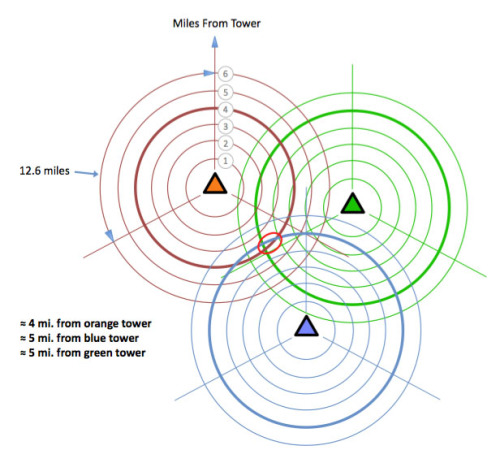
If a third mobile tower is available, and the source device is determined to be 10km from the third green tower, this illustration shows that the area of location can be estimated with even better accuracy.
Keep in mind that the device must be within range of all three mobile towers & negotiating at the same time.
In densely populated areas, the mobile towers are close together, and a much closer estimation of device location can be made than in a rural area, where the towers much further apart from each other.
Some of the newest cell phones and 3G/4G GPS tracker devices can actually report a GPS location, and this is quite accurate, and doesn’t rely on the cell towers at all.
Conclusion
It is possible to determine device location with only 1 mobile tower, but for best results and for true triangulation, you will need 3+ towers.
By using mobile tower triangulation of 3 or more towers, it is possible to determine a phone location to within an area of close to 1.2km².
